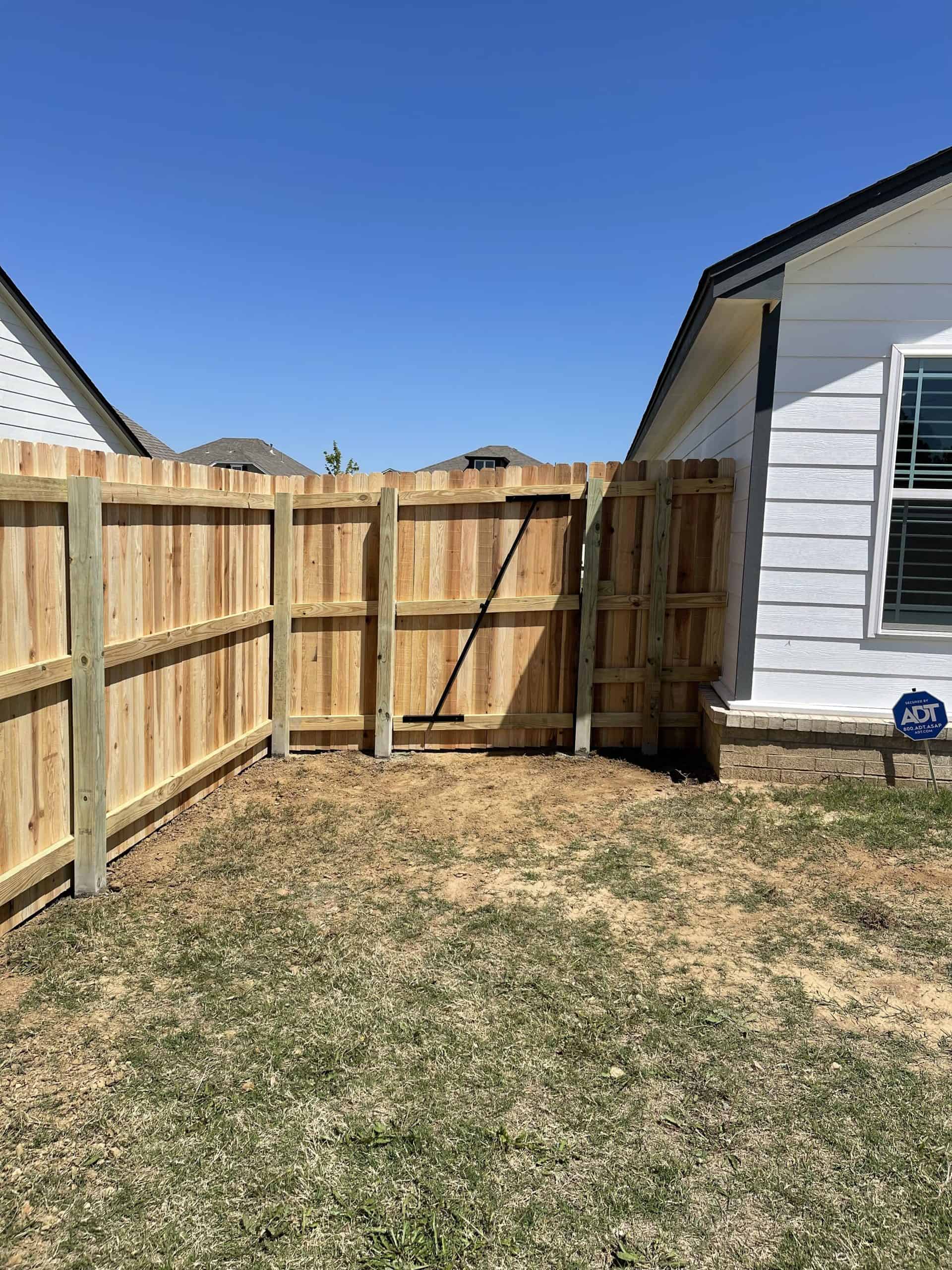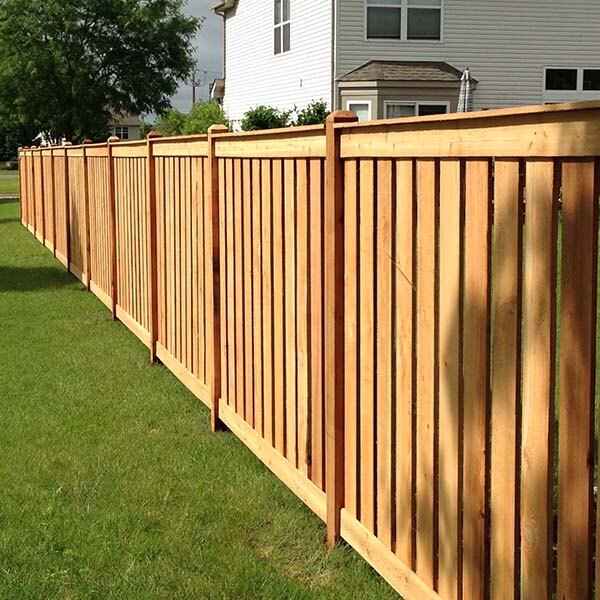How to Recognize Usual Problems That Need Immediate Fencing Repair
It is essential to spot problems before they become larger issues when it comes to maintaining your fencing. Regularly looking for indications of decaying wood, leaning panels, or corrosion can conserve you time and money in the long run. You may not understand just how weather condition and pests can endanger your fencing's integrity. Allow's check out the typical signs that indicate your fence needs instant attention, so you can maintain your property safe and looking its ideal.
Signs of Rotting Timber in Wooden Fences
Have you discovered your wood fencing looking a little bit even worse for wear? It may be time to check for indications of decaying wood if so. Analyze the base of the articles and panels for soft places. That's a clear sign of rot if you push on the timber and it feels spongy or crumbles. Next off, search for staining or dark areas on the wood-- these usually signal moisture damage. Take notice of any type of peeling paint or surface, as this can reveal the wood to more degeneration. Furthermore, a poignant, moldy smell can suggest fungal development. Don't neglect to evaluate joints and links; if they're loose or dropping apart, the wood under is likely endangered. By catching these indications early, you can prevent a lot more considerable damages and keep your fencing standing solid. Regular upkeep is crucial to extending the life of your wooden fencing.
Leaning or Tilting Fencing Panels
It's essential to recognize what created it if you have actually seen your fence panels tilting or leaning. This problem might indicate underlying architectural damage that needs your focus. Let's explore the common reasons and the repair service options readily available to obtain your fence back fit.

Sources Of Leaning Panels
It's commonly an indicator of underlying concerns that require addressing when you discover your fencing panels leaning or tilting. One common reason is poor drainage; extreme water can wear down the dirt around the fence articles, compromising their support. One more offender could be strong winds or tornados that push against the panels, especially if they're not correctly anchored. Additionally, the all-natural settling of soil with time can create posts to change, leading to a tilt. Parasites, like termites, can compromise the honesty of wood panels, triggering them to lean. Bad setup practices may result in panels not being firmly set, leaving them at risk to leaning under pressure. Address these problems immediately to preserve your fencing's integrity.
Indicators of Architectural Damage
Observing tilting or leaning fencing panels can be alarming, as these problems commonly suggest structural damage that requires instant attention. When your fence starts to lean, it might signal that the articles are shifting or that the soil around them has actually deteriorated. Pay very close attention to voids between articles or panels, as these can also recommend instability. deck builder. Additionally, look for fractures or splintering in the timber, which can compromise the general framework. It could endanger the integrity of the fence if you see rust or rust on metal parts. Keep in mind, disregarding these indications can bring about a lot more severe damage down the line, so it's vital to evaluate the situation without delay and do something about it prior to it intensifies
Fixing Options Available

Rust and Corrosion in Metal Fences
If you have a metal fence, you could see corrosion and rust creeping in with time, particularly if it's subjected to moisture. These problems not only affect the look of your fence but can also jeopardize its architectural stability. To identify corrosion, search for reddish-brown spots or spots, which indicate the steel is oxidizing. Deterioration can spread out rapidly if left neglected, leading and deteriorating the fencing to costly repairs.To deal with rust and rust, you must clean the impacted areas with a cable brush and use a rust-inhibiting guide. Once the guide dries out, take into consideration repainting the fence with a weather-resistant paint to shield it better. Regular upkeep, such as inspecting for signs of rust and touching up paint as required, will help extend your fencing's lifespan. Dealing with these problems without delay guarantees your steel fencing continues to be solid and visually appealing for many years ahead.
Fractures and Splits in Vinyl Secure Fencing

Root Causes Of Vinyl Damages
Vinyl fencing is popular for its resilience, yet it can still struggle with cracks and splits due to various elements. One major cause is severe temperature level variations. When vinyl increases in the warmth and contracts in the cold, it can deteriorate the material gradually. Additionally, direct exposure to severe sunlight can cause UV deterioration, making the plastic brittle. Physical effects, like unintended crashes or hefty branches, can likewise develop fractures. Poor setup or making use of low-grade products can aggravate these issues. Age plays a duty; older plastic fence is more susceptible to damage. Routine examinations can help you recognize these variables before they bring about significant problems. Take proactive procedures to assure your fence remains undamaged and solid.
Repairing Cracks Effectively
Splits and splits in your vinyl fencing can be worrying, resolving them immediately can stop additional damage and maintain the fence's look. Examine the size of the split. For small splits, a vinyl repair package typically includes glue that can bond the edges, supplying a smooth solution. Tidy the area thoroughly before applying the sticky, guaranteeing it sticks correctly. For bigger splits, you may require to utilize a vinyl spot. Cut the patch to size, apply glue around the sides, and press it firmly onto the split. Allow it to cure based on the manufacturer's directions. Regular maintenance and quick repairs can prolong your fence's lifespan, keeping it looking great for years ahead.
Loose or Missing Fencing Blog Posts
Loose or absent fence blog posts can weaken the security of your whole fencing framework. It's essential to address the issue promptly if you observe any type of posts leaning or tottering. Look for any indications of movement, as this can result in additional damages with time. You can conveniently analyze the trouble by offering each message a gentle shake-- if it really feels unstable, it's time to take action.For missing out on blog posts, you'll require to change them as soon as possible to keep your fence's honesty. When you mount brand-new messages, ensure they're safely secured in the ground with concrete or gravel for included security. If a blog post is loose, tighten it by including added support or driving it deeper into the ground.Ignoring these concerns can lead to bigger troubles, like gaps in your fence or perhaps complete collapse. Maintain an eye on your articles and stay positive about repair work!
Damages From Weather and Natural Components
Weather condition and natural environments can ruin your fence, bring about different forms of damages that call for timely interest. Hefty rain can cause timber to rot, making it weak and unpredictable. Snow buildup might flex or damage panels, while strong winds can uproot fence articles or trigger areas to lean.If you discover fractures or splintering in wood fencings, it's a sign of drying as a result of extreme sun direct exposure. Metal fencings can corrosion if safety finishes put on off, particularly in humid or seaside areas.Inspect your fence regularly after storms or severe weather condition to catch any type of damages early. Resolving these issues promptly can save you from pricey repair work down the line. Do not wait till a little problem develops into a major one; remain positive and keep your fence leading shape to keep both capability and aesthetic appeal.
Parasite Problem and Termite Damages
When you notice indications of bug problem or termite damages, it's vital to act rapidly to stop further destruction. Look for mud tubes along your fence or hollow-sounding wood, as these indicate termites are at job. You could also see small openings or frass, which is termite droppings resembling sawdust. If you detect any one of these signs, it's time to evaluate the damage.Don' t delay until it's far too late; insects can compromise your fence's stability. Evaluate the surrounding location for beetles or ants, as they might be adding to the trouble. If you believe a problem, consider speaking to a pest control expert to validate and deal with the issue.Repairing or replacing afflicted areas of your fencing quickly not only recovers its stamina yet likewise stops pests from spreading better. Keep attentive to maintain your building pest-free and protected.
Frequently Asked Concerns
Just how Commonly Should I Check My Fencing for Damage?
You need to evaluate your fencing at the very least two times a year, preferably during spring and autumn. Regular checks aid you identify damage early, saving you money and time on repairs while keeping your residential property's appearance and security.
Can I Repair a Fencing Myself or Hire a Professional?
You can absolutely fix a fencing on your own if you have the right devices and abilities. Nevertheless, employing an expert assurances high quality job and saves you time, especially for complex repairs or comprehensive damages.
What Equipment Are Needed for Basic Fencing Repairs?
For fundamental fence repair work, you'll require tools like a hammer, screwdriver, pliers, a saw, a level, and measuring tape. deck builder. Relying on the repair work, you could also require nails, screws, or replacement boards
Just How Much Does Fencing Repair Service Commonly Cost?
Fencing fixing costs vary extensively, but you can anticipate to pay between $200 and $1,500 depending upon products, labor, and extent of damages. It's smart to obtain multiple quotes for the very best deal.
When Is the most effective Season for Fencing Repairs?
The finest time for fencing repair work is throughout mild weather, commonly in springtime or very early autumn. You'll stay clear of severe temperatures, making it easier to function and guaranteeing the materials established appropriately for lasting resilience (deck builder). Noticing leaning or tilting fence panels can be disconcerting, as these concerns typically suggest architectural damage that needs immediate interest. Loosened or missing fence messages can threaten the stability of your whole fence framework. Snow build-up could bend or break panels, while strong winds can root out fencing blog posts or cause sections to lean.If you notice splits or splintering in wood fences, it's an indicator of drying out due to extreme sun exposure. Metal fencings can corrosion if protective finishes use off, particularly in coastal or damp areas.Inspect your fencing regularly after tornados or extreme weather to capture any damages early. Fence repair service expenses differ extensively, however you can anticipate to pay in between $200 and $1,500 depending on materials, labor, and level of damage